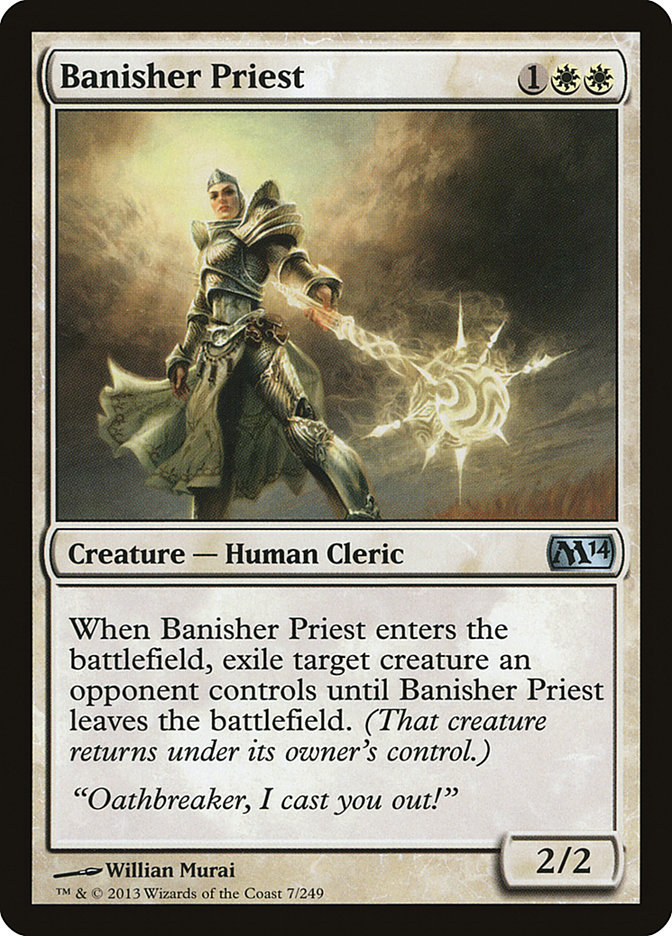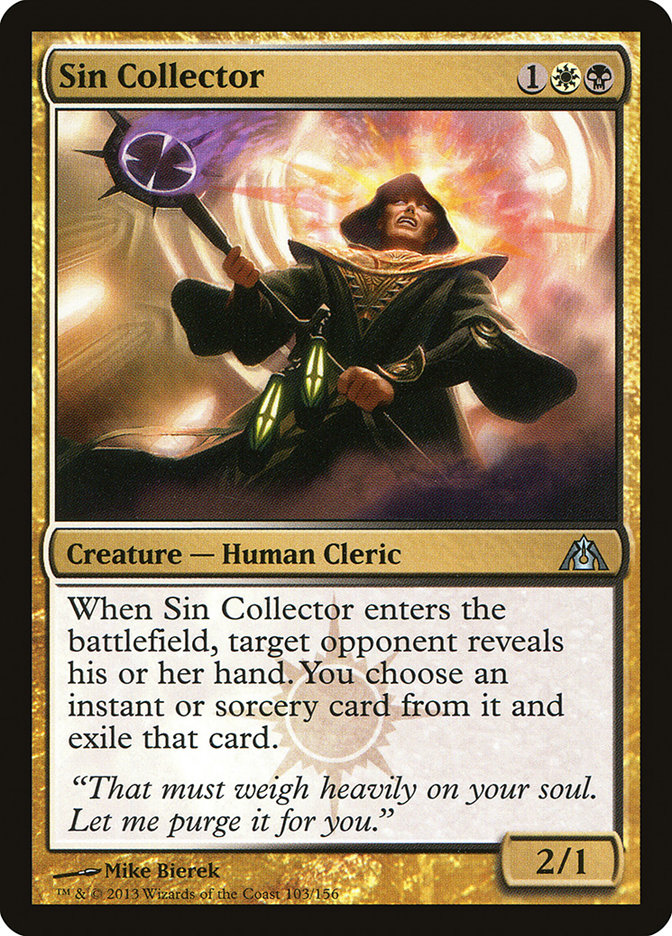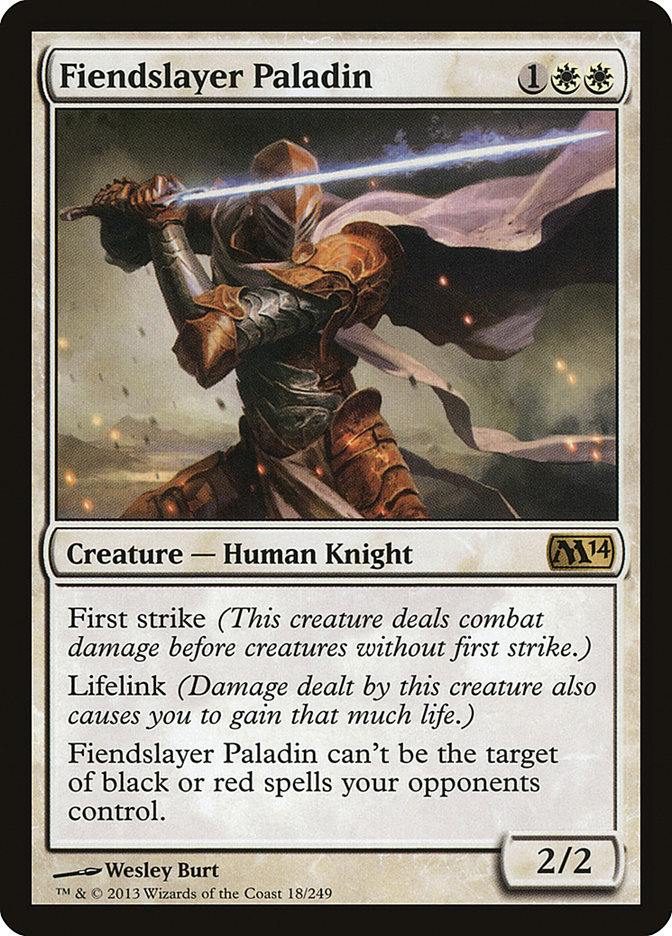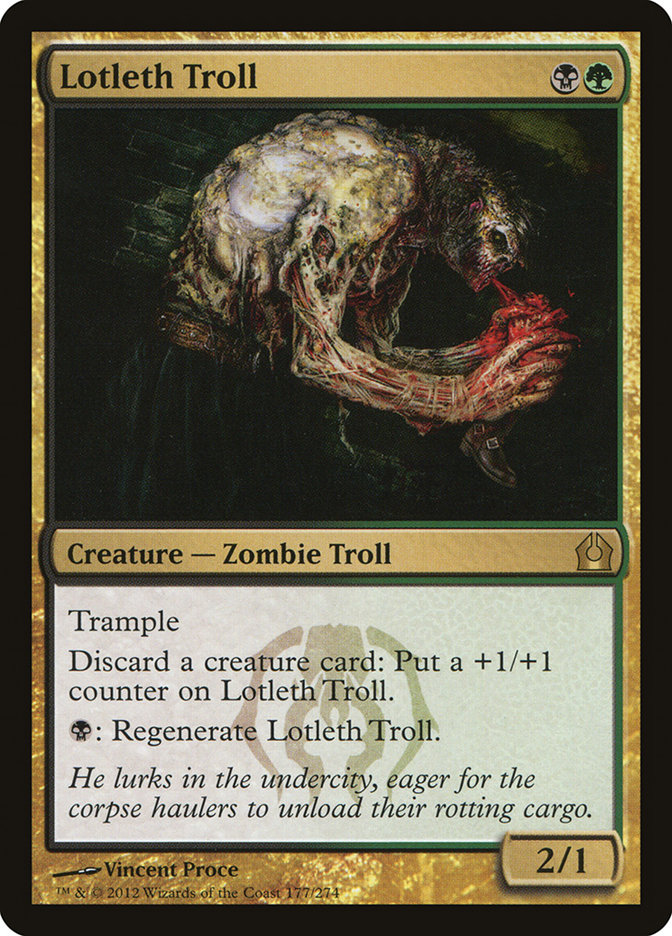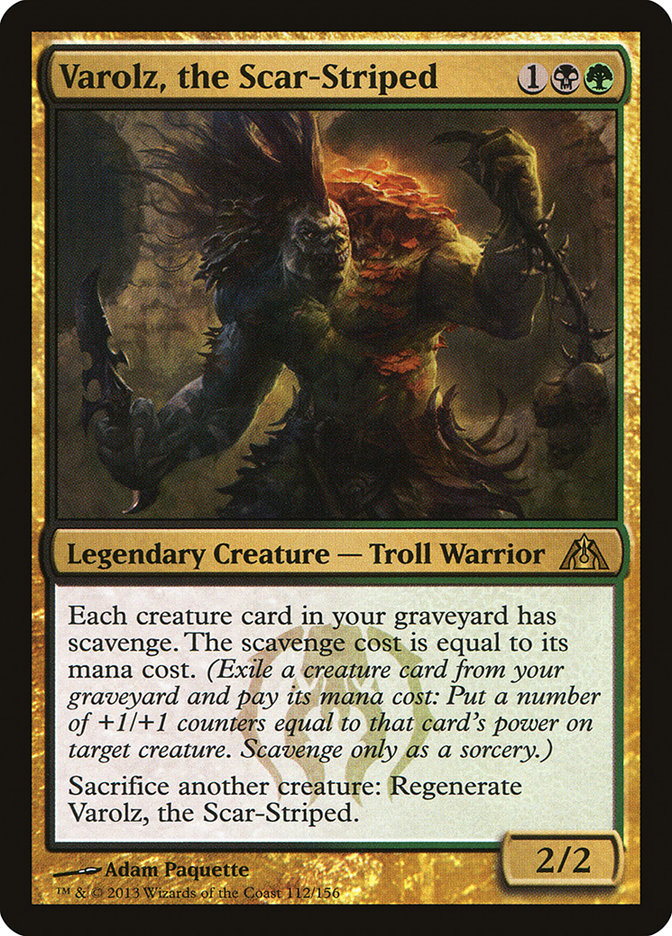Pro Tour Theros has come and gone, leaving us with a completely new state of Standard that is currently being dominated by various Devotion strategies. It’s always amazing how these teams of powerful players break Standard after just a week of intensive testing. However, there’s no time to dwell on that. There are many wonderful tournaments ahead of us, and it’s time to find out how to deal with Devotion decks and more importantly how to deal with those that are good against Devotion.
This week should be called "overreaction week." Mono-Blue Devotion dominated PT Theros, but it was barely the third or fourth most popular deck at the top tables of Grand Prix Louisville. Which decks were the most popular?
Esper Control
B/W Midrange
G/R Devotion
Yes, three decks with a good matchup against Mono-Blue Devotion. Does that mean that Mono-Blue Devotion isn’t good anymore? Surely not. Sam Black took the deck to another Top 8 this past weekend in Louisville, and there were two copies in the Top 16 at the SCG Standard Open: Seattle. Moreover, other Devotion decks are still around, and I expect them to recover from overreaction when people start thinking about how to beat Esper Control (read: Mono-Red Aggro may be reasonable choice). From the other point of view, Esper is actually very good right now, so there’s no reason to drop it if you like the deck. The idea for the next week is to have fine matchups against both Esper Control and various Devotion decks. Is that possible?
An important note: monocolored devotion decks concentrated on permanents of one color make Brave the Elements dramatically better. Devotion decks usually contain a very limited selection of removal, which helps create a significant board presence. From the other point of view, Brave the Elements is fine against pinpoint removal (read: "useful against Esper"), so I’m going to consider White Weenie as a viable strategy. The questions to solve are Supreme Verdict and removal-heavy midrange decks, but I have some ideas about how to do that.
I don’t particularly like the "classic" White Weenie decks that have emerged here and there. A bunch of semi-good cards like Daring Skyjek isn’t what I’d like to register at a tournament. Previous White Weenie decks have had powerful late-game threats like Cloudgoat Ranger and Ranger of Eos to support early pressure, while contemporary builds mostly rely on cards like Boros Charm that allow them to over commit to the battlefield. This strategy could work, but I have a strong feeling that a powerful threat is needed. Do we have something to fit the bill these days?
Yes, we have Obzedat, Ghost Council. The card is exactly what we need: powerful and hard to deal with. When you start thinking about Obzedat in White Weenie, you should immediately go to Patrick Chapin and Paul Rietzl deck from the Pro Tour. Their deck is midrange, though, with a strong early game, while we’re trying to lighten the mana curve and include enough creatures to make Brave the Elements effective. But Orzhov Midrange offers many things to think about.
Creatures (21)
- 4 Dryad Militant
- 4 Precinct Captain
- 3 Obzedat, Ghost Council
- 4 Banisher Priest
- 2 Imposing Sovereign
- 4 Soldier of the Pantheon
Planeswalkers (3)
Lands (23)
Spells (13)

This deck has a consistent early game, the ability to cut the opponent off from relevant answers (especially post-board), and Brave the Elements to protect its threats. Spear of Heliod and Ajani, Caller of the Pride are included in the deck to transform tiny threats into something more powerful after the first onslaught. What I like about this deck is that we can always pressure Esper Control with one or two creatures and Ajani, forcing them to cast Supreme Verdict, and then simply play one more creature and continue. Chapin’s B/W has fewer cheap creatures and no ways to improve them, while Desecration Demon is hard to resolve and keep on the board against Esper.
Speaking of removal, Banisher Priest is the most interesting slot in the deck. It’s great in many matchups, but more importantly it’s not dead against decks like Esper Control. A 2/2 body for three mana is still relevant, and Ajani, Caller of the Pride can easily make Banisher Priest powerful enough to pressure Esper. In creature matchups, there is a fair chance that the opponent will be unable to kill it before it’s too late, and a 2/2 body is much more relevant to an aggressive deck than Fiend Hunter’s 1/3 body. Nevertheless, half of my current sideboard is three-mana creatures aiming to exchange Banisher Priest in appropriate matchups: Sin Collector against Esper Control and Mono-Black Devotion and Fiendslayer Paladin as a sort of concession to Mono-Red Aggro.
Mono-Red Aggro was nearly the worst choice for Pro Tour Theros, but it has a good matchup against Esper Control, so I can imagine seeing it at the top again. An additional factor is that the deck is very cheap and so drastically overrepresented on Magic Online. I don’t expect such a quantity in real-life tournaments, but you should be ready to face red decks in some capacity.
I’d probably want Boros Reckoner in Fiendslayer Paladin’s slot to improve the midrange matchups, but six nonwhite lands are too many to justify our favorite Minotaur (the idea of exchanging some Swamps for Blood Crypts may be not that bad). From the other point of view, Mono-Black Devotion is very popular too (at least partially because of its cheap price), so Fiendslayer Paladin’s protection is very relevant and Mono-Black’s poor mana curve allows us to side in Fiendslayer Paladin and Sin Collector simultaneously without fear of being too slow.
Other options for a similar deck are Boros and Selesnya, but Boros provides a better answer to Supreme Verdict (Boros Charm) at the cost of much worse removal (if any) and the lack of a powerful late-game threat. Selesnya’s increase in creature quality is mitigated by eventual mana problems and conditional removal. Nevertheless, embedded invulnerability to Supreme Verdict matters, so while I don’t recommend playing Selesnya right now, you better keep it in your gauntlet and consider as a choice for a metagame where people choose Mono-Red Aggro as a weapon against Esper Control. My version of W/G Aggro is the following:
Creatures (20)
Planeswalkers (3)
Lands (23)
Spells (14)

That’s the exact deck type of deck I hate to play—symmetric mana base with one-mana creatures in both colors, strong color requirements of two-mana creatures, and a lack of disruption. This deck is too fair to be good, even if half of its creatures are hard to deal with. Two copies of Brave the Elements may be the missing piece that allows the deck to break stalemates in creature-based matches and protect key creatures from Esper’s removal. However, I should repeat that the deck looks too fair to be good right now.
Before moving away from Brave the Elements, I should say that there is another card able to contend with the white instant in allowing your creatures to go past blockers. This card is Mogis’s Marauder, and I see some potential in it. As many know by now, Ari Lax chose a B/R Aggro deck for Pro Tour Theros based on this card. However, his deck and all my Marauder-based testing sketches suffered from the lack of high-quality creatures, so I finally dismissed the idea and proceeded to decks able to utilize one or two Mogis’s Marauders alongside other good cards.
The G/B creation I presented last week is an example of such a deck. I have changed it significantly since last time; it is slower but more reliable and better against the metagame.
Creatures (27)
- 3 Scavenging Ooze
- 3 Dreg Mangler
- 4 Lotleth Troll
- 4 Experiment One
- 2 Varolz, the Scar-Striped
- 4 Skylasher
- 2 Elvish Mystic
- 2 Boon Satyr
- 3 Reaper of the Wilds
Lands (24)
Spells (9)
Sideboard

I finally came to conclusion that the deck’s mana base is good enough to support Lotleth Troll, who is absolutely amazing against control decks. The same can be said for my pet card Varolz, the Scar-Striped, who has the ability to transform little dead creatures into deadly Skylashers along with ability to survive Supreme Verdict and even take advantage of it.
Scavenging Ooze is kind of a mess due to the lack of synergy with Varolz, but it’s still a very good card. In contrast to Selesnya, this Golgari deck has significant amount of removal to make Ooze reasonable without the opponent’s help. From the other point of view, Oozes could be Elvish Mystics number three and four and Reaper of the Wilds number three, the third Varolz and two more removal spells, or two copies of Mistcutter Hydra. This slot is flexible and probably depends on the metagame.
The sideboard contains additional disruption, Mogis’s Marauder for creature-based matchups, Golgari Charm (which came to the sideboard from the maindeck; the card is fine, but Doom Blade and Abrupt Decay are better in the maindeck), Mistcutter Hydra for Esper Control and Mono-Blue Devotion, Gift of Orzhova for Mono-Red Aggro (a reason to cut Scavenging Ooze), and "oh no, not this thing again" Pack Rat.
Pack Rat is in the deck for the very same reason that Brave the Elements is good—blue and green Devotion decks are short on removal and can easily lose to a fast Pack Rat ala Return to Ravnica Limited. Black Devotion even plays some copies maindeck. We don’t have Mutavault to pump our Rats, but Varolz, the Scar-Striped can utilize the bodies and improve our threat quality, which is very important in specific matchups.
This deck is well suited against both Esper Control and Mono-Blue Devotion, but the metagame will surely shift during the next few weeks, so turn your sails to the wind and be ready to exploit the format’s weaknesses, which are still numerous.
Good luck if you’re playing this weekend!

